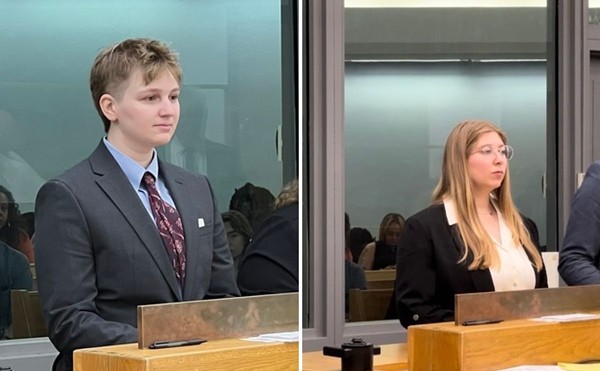C
incinnati voters will decide in November whether their City Council members will serve four-year terms instead of the current two-year ones — councilors just haven’t decided which proposal to send to voters.
Council will meet Aug. 1 to choose between two ordinances to put four-year terms on the ballot. They’re extremely similar, but one would set up staggered terms while another would continue to have all nine council members run in the same election.
“Either would give us the benefit of people focusing on the job,” says Councilwoman Laure Quinlivan, who is the force behind the two proposed ordinances.
Quinlivan says she decided to bring up the idea of four-year terms halfway through her first term in 2011.
“(That year) rolled around and I noticed a dramatic change in the way the government runs and the way council members treat one another,” says Quinlivan, who is currently serving her second term on Council.
“Suddenly people who you could ordinarily work with on some basic things could no longer work with you because it was an election year.”
Quinlivan said four-year terms would allow Council members to focus on more complex issues instead of worrying about reelection every other year.
Gene Beaupre, director of government relations at Xavier University and longtime observer of local politics, agrees with Quinlivan’s assessment of the potential benefits of moving to four-year terms.
“Some amount of energy is directed toward your own political future as an elected official, and I think it can impair your ability to have a greater vision,” he says. He said politicians worry more about political victories between elections than long-term goals.
But, he says, there are also potential downfalls.
“Arguments go to ‘the purpose of an election is a chance to do a performance appraisal … on your public officials,’ ” Beaupre says. “Most places you go, those are annual.”
Beaupre says a four-year term would also give greater advantage to incumbents.
“You don’t have to run as frequently, and you have a longer time to make mistakes and have people forget.”
The proposals maintain the current eight-year term limit, though some councilors could end up serving 10 years during the transition.
Staggered terms under one of the proposed ordinances would have five council members elected with the mayor in 2013, and then every four years after that. The remaining four seats would be run for two-year terms, with four-year terms starting in 2015.
Quinlivan herself says she has a slight preference for non-staggered terms, because the ordinance would be simpler. She says holding one Council election every four years would save Cincinnati taxpayers $250,000.
The proposals originally included a provision to roll back the clock on term limits, starting all current council members off with a blank slate regardless of how long they had served.
“The reason it got in there was (Councilman) Charlie Winburn felt that if you institute a brand new system you should just start it over,” Quinlivan says. “We took it out when we heard from the public, ‘we didn’t like that.’ ”
Winburn declined to speak with CityBeat.
This isn’t the first time Council has considered giving voters the choice to amend the city’s charter to extend Council terms.
As recently as last year the issue was put before council members, but it was defeated by the conservative bloc, all of whom were voted out of office last November.
Vice Mayor Roxanne Qualls says she thinks the failure of council to put an amendment before voters last year came down to politics.
“I think for those people most recently who opposed it, they did not want to see the current members of council who retained their seats be able to serve for four years without the folks who lost their seats having to run against them,” Qualls says.
Qualls supports non-staggered terms and credits Quinlivan as the reason the push has gathered so much traction this year.
Quinlivan says the reason charter amendments to instate four-year terms have failed before voters in the past is because they were too complicated — often including other changes in addition to term limits.
Beaupre agrees.
“If I were consulting a campaign I would say that’s the kiss of death if you put too many things on it (the amendment), even if it makes the most sense, that doesn’t matter to that voter in there. So you cross purposes if you create what you believe is the most efficient form of governance and you have to do it piecemeal like that,” he said. “The process is cumbersome, but some argue that’s what framers had in mind.”
Not all on Council are in favor of four-year terms, and at least one is ready to jump in with more sweeping changes.
“I think what voters really want and deserve is more accountability, and I don’t see four-year terms as the right first step to getting there,” Councilman P.G. Sittenfeld emailed CityBeat in a statement.
“I think the city should have a hybrid system of districts and at-large seats — for example, 6 districted seats and 3 at-large seats. This ensures broader representation, and provides all citizens with a point of accountability. If that system was in place, then I think you can start thinking about 4-year terms.”
Districting would involve carving up Cincinnati into districts and having councilors elected from each geographic area, much like the way representatives to the state legislature or Congress are elected.
Quinlivan says Cincinnati is behind every Ohio township and large city, all of which have four-year terms.
“Long after I’m gone from this city council I hope that we have elected officials serving four-year terms,” Quinlivan says. “Now that I’m on this other side I can see how important it is. Before I got on council, I probably wouldn’t have cared.”






